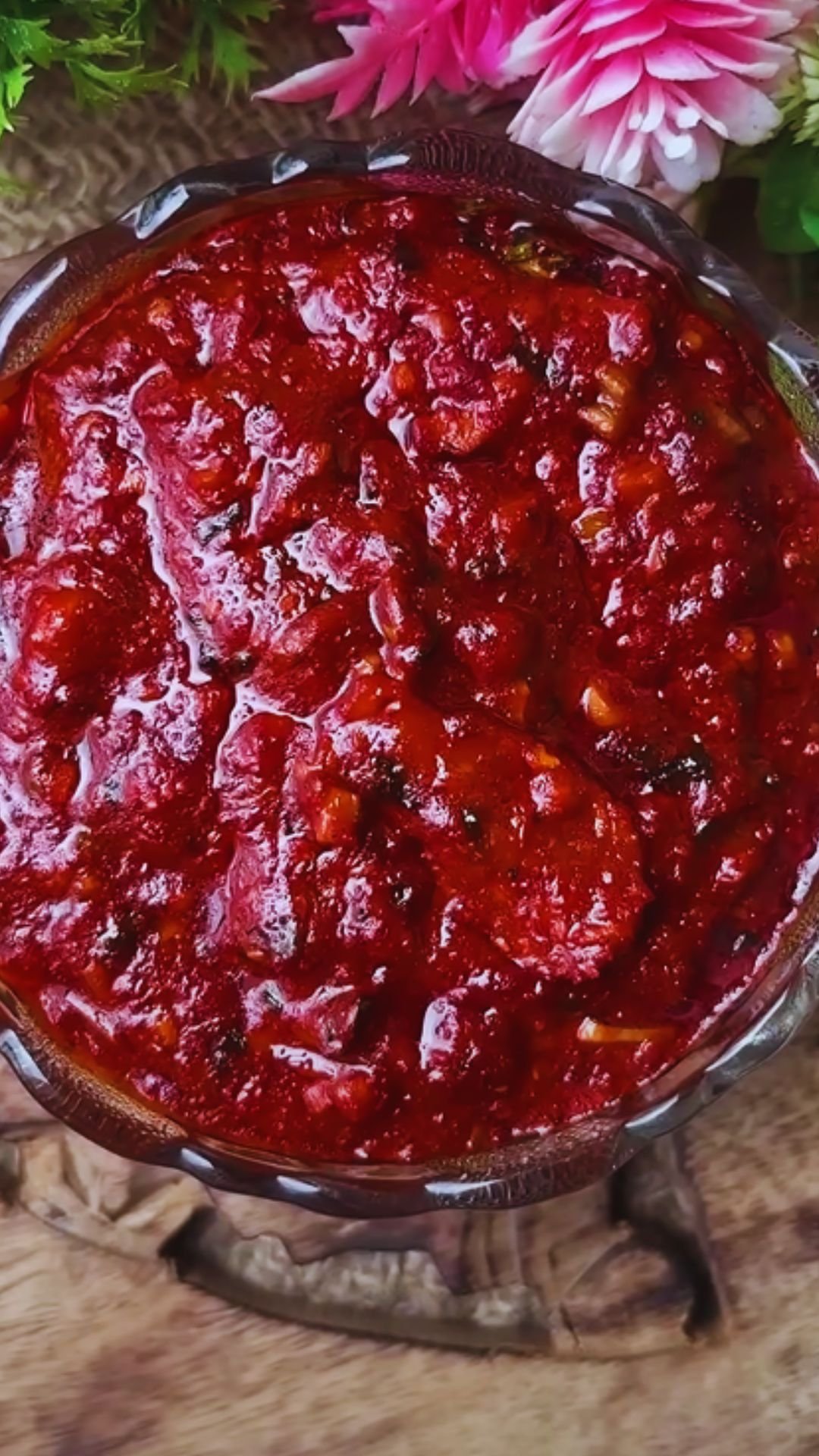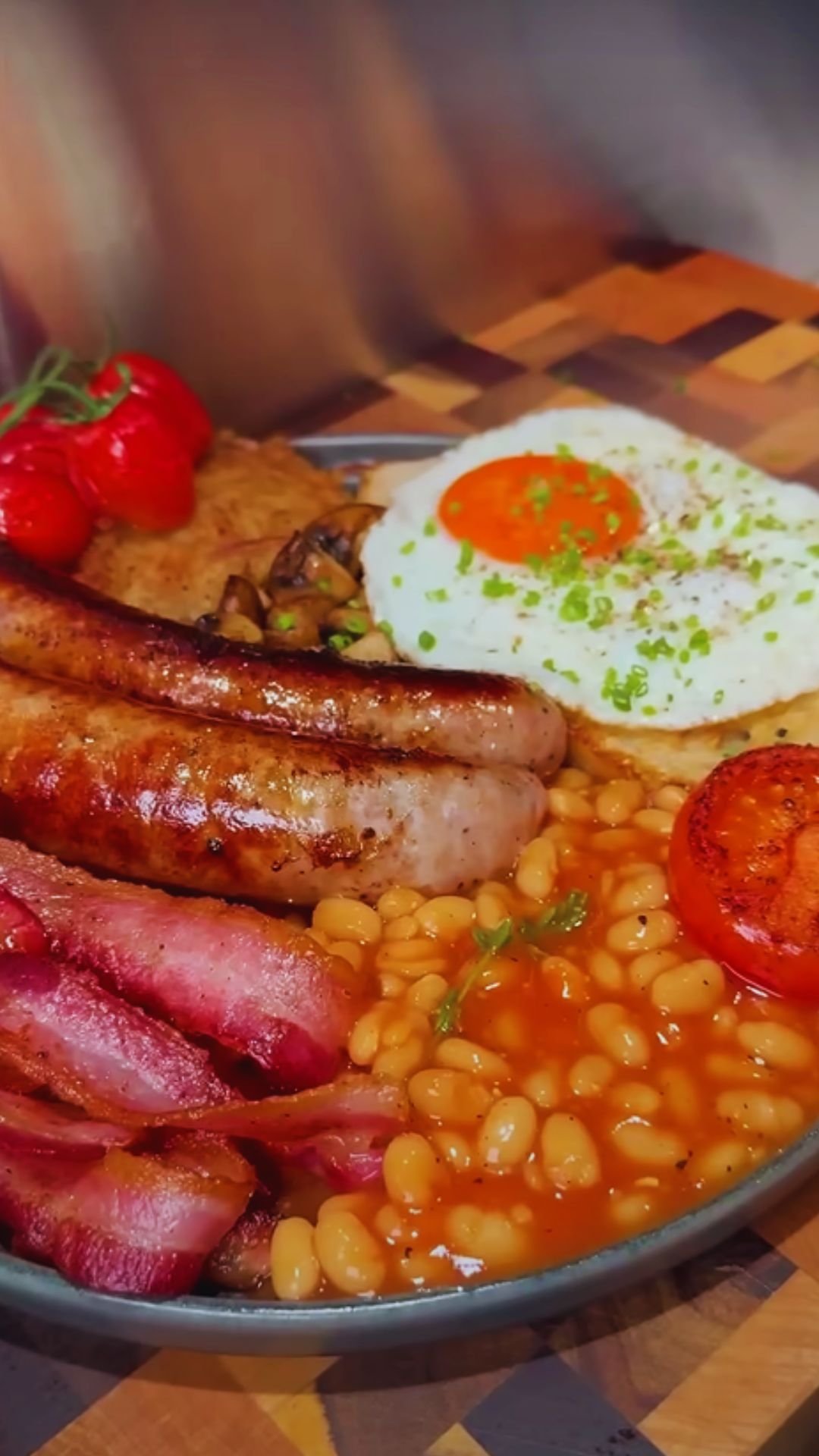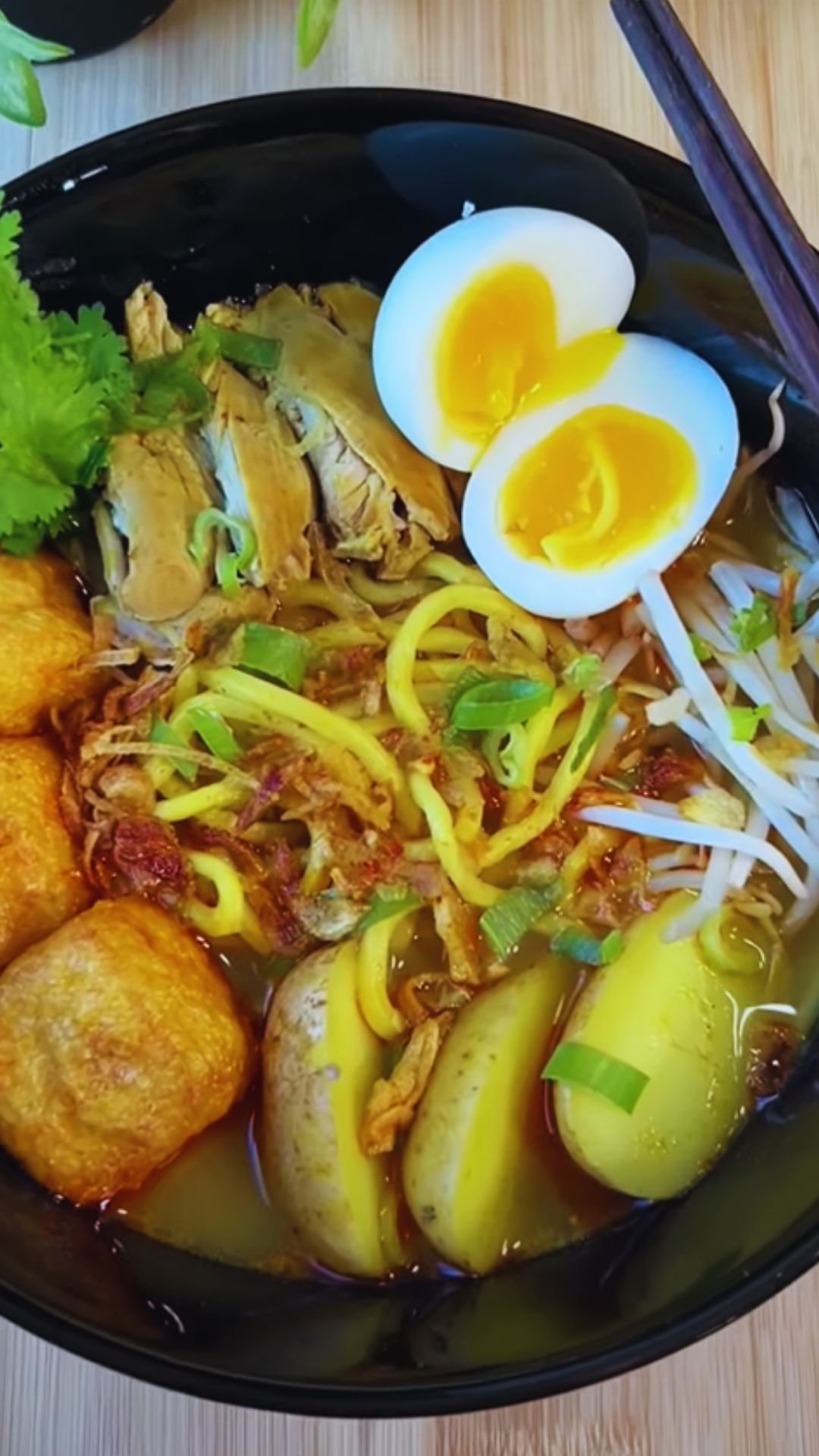Have you ever tasted something that simultaneously numbs your lips, makes your tongue tingle, and sends your taste buds into a frenzy of delight? That’s the magic of Szechuan sauce—a complex, aromatic condiment that’s captured the hearts of food enthusiasts worldwide.
I’ve spent years perfecting my Szechuan sauce recipe, experimenting with different ratios of ingredients and cooking techniques until I finally created what I consider the ultimate version. Today, I’m sharing everything I’ve learned about this iconic Chinese sauce—from its fascinating history to the secrets of making it at home.
What Is Szechuan Sauce?
Szechuan sauce (also spelled Sichuan or Szechwan) is a spicy, tangy, slightly sweet sauce originating from the Sichuan province in southwestern China. What makes this sauce truly distinctive is its complex flavor profile that combines heat from chili peppers with the unique numbing sensation provided by Szechuan peppercorns.
The sauce isn’t just spicy—it embodies the Chinese culinary concept of “málà” (麻辣), which translates to “numbing spiciness.” The numbing sensation comes from hydroxy alpha sanshool, a compound found in Szechuan peppercorns that creates a unique tactile experience while eating.
The Fascinating History of Szechuan Sauce
The roots of Szechuan cuisine stretch back over 2,000 years, but the sauce as we know it today has a more recent evolution. Sichuan Province’s climate is notably humid, which historically led locals to develop preservation techniques and bold flavors using chili peppers and peppercorns.
Interestingly, chili peppers aren’t native to China—they were introduced from the Americas in the 16th century. Before that time, Sichuan cuisine relied primarily on native peppercorns for its signature flavors. When chili peppers arrived, they were quickly embraced and incorporated into the local cuisine, forever changing its flavor profile.
In recent decades, Szechuan sauce gained international attention through various cultural phenomena. In 1998, McDonald’s offered a limited-edition Szechuan sauce as a promotion for Disney’s “Mulan.” This sauce later became an internet sensation in 2017 when it was mentioned in the animated series “Rick and Morty,” causing such demand that McDonald’s temporarily brought it back.
However, the authentic Szechuan sauce from China bears little resemblance to these commercial adaptations. Traditional Szechuan sauce is a complex blend of flavors that showcases the region’s culinary mastery.
Key Ingredients for Authentic Szechuan Sauce
The beauty of Szechuan sauce lies in its perfect balance of ingredients. Here are the essential components that create its distinctive flavor:
- Szechuan Peppercorns: These aren’t actually peppers but the dried berries of the prickly ash tree. They provide the signature numbing sensation called “má.”
- Dried Red Chilies: These deliver the heat component (“là”) of the málà experience.
- Doubanjiang: A fermented broad bean and chili paste that serves as the foundation of many Szechuan dishes.
- Garlic and Ginger: These aromatics create a fragrant base.
- Soy Sauce: Adds depth, umami, and saltiness.
- Chinese Black Vinegar: Contributes tangy acidity to balance the heat.
- Chinese Five Spice: A blend typically containing star anise, cloves, Chinese cinnamon, Szechuan peppercorns, and fennel seeds.
- Brown Sugar: Adds subtle sweetness to balance the spice.
- Sesame Oil: Provides a nutty finish.
Understanding Doubanjiang
Doubanjiang deserves special attention as it’s often misunderstood outside of China. This fermented paste is to Szechuan cuisine what miso is to Japanese cooking—fundamental and irreplaceable.
There are two main varieties:
- Regular doubanjiang (豆瓣酱): Made from broad beans, salt, and spices
- Spicy doubanjiang (辣豆瓣酱): Includes chili peppers for additional heat
For authentic Szechuan sauce, look for Pixian doubanjiang, which comes from a specific region known for its high-quality product. The best versions are aged for years, developing deeper flavors.
The Ultimate Szechuan Sauce Recipe
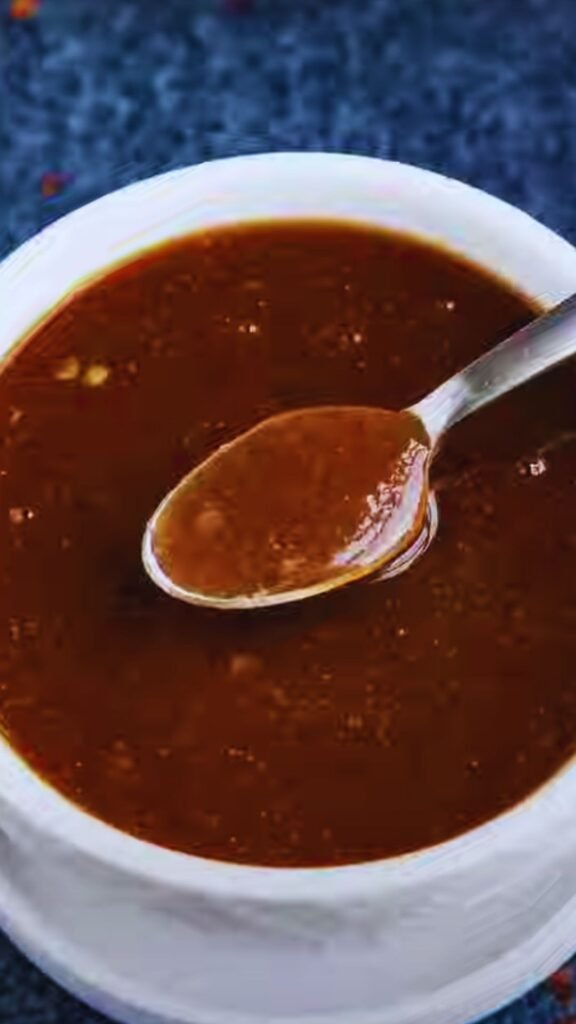
After countless tests and refinements, I’ve developed what I believe is the perfect balance of flavors in this Szechuan sauce recipe. It’s adaptable enough to use as a stir-fry sauce, dipping sauce, or marinade.
Ingredients
- 2 tablespoons Szechuan peppercorns
- 15-20 dried red chilies (adjust to your heat preference)
- 3 tablespoons doubanjiang (fermented bean paste)
- 6 cloves garlic, minced
- 2 tablespoons fresh ginger, minced
- 1/4 cup vegetable oil
- 3 tablespoons soy sauce
- 2 tablespoons Chinese black vinegar
- 1 tablespoon brown sugar
- 1 teaspoon Chinese five-spice powder
- 2 tablespoons water
- 1 teaspoon sesame oil
- 2 green onions, finely chopped
Equipment Needed
- Small, heavy-bottomed saucepan
- Mortar and pestle (or spice grinder)
- Fine mesh strainer
- Heat-resistant storage container
Step-by-Step Instructions
- Toast the peppercorns: Place Szechuan peppercorns in a dry pan over medium heat. Toast for 2-3 minutes until fragrant, shaking the pan frequently to prevent burning. Remove from heat and let cool.
- Prepare the chilies: Remove stems from dried chilies and shake out most of the seeds (unless you prefer extra heat). Cut into small pieces with scissors.
- Grind the spices: Using a mortar and pestle or spice grinder, grind the toasted peppercorns to a coarse powder. Set aside.
- Create the flavor base: Heat vegetable oil in a saucepan over medium-low heat. Add dried chilies and cook for 1-2 minutes until they begin to darken slightly.
- Add aromatics: Add minced garlic and ginger to the oil. Cook for 30 seconds until fragrant but not browned.
- Incorporate doubanjiang: Add the fermented bean paste and stir continuously for 2 minutes to release its flavors into the oil.
- Add remaining ingredients: Stir in soy sauce, black vinegar, brown sugar, five-spice powder, and water. Reduce heat to low and simmer for 5-7 minutes, stirring occasionally.
- Finish the sauce: Remove from heat and stir in the ground Szechuan peppercorns and sesame oil. Let cool for 10 minutes.
- Strain if desired: For a smoother sauce, strain through a fine mesh strainer, pressing on the solids to extract maximum flavor. For a chunkier texture, leave as is.
- Add fresh elements: Stir in chopped green onions. Let the sauce cool completely before transferring to a storage container.
The sauce will keep refrigerated for up to two weeks, and the flavors actually improve after 24 hours as they meld together.
Variations to Try
One of the joys of making your own Szechuan sauce is the ability to customize it to your preferences. Here are some delicious variations to experiment with:
Extra Numbing (Má Heavy)
- Double the Szechuan peppercorns
- Add 1 teaspoon of ground white pepper
Extra Spicy (Là Heavy)
- Use 30 dried chilies instead of 15-20
- Add 1 teaspoon of cayenne pepper
- Include 1 tablespoon of chili oil
Sweet and Spicy
- Increase brown sugar to 2 tablespoons
- Add 1 tablespoon of honey
- Include 1 tablespoon of orange zest
Umami Boost
- Add 1 tablespoon of fermented black beans, rinsed and chopped
- Include 1 teaspoon of mushroom powder
- Use dark soy sauce instead of regular soy sauce
Cooking with Szechuan Sauce
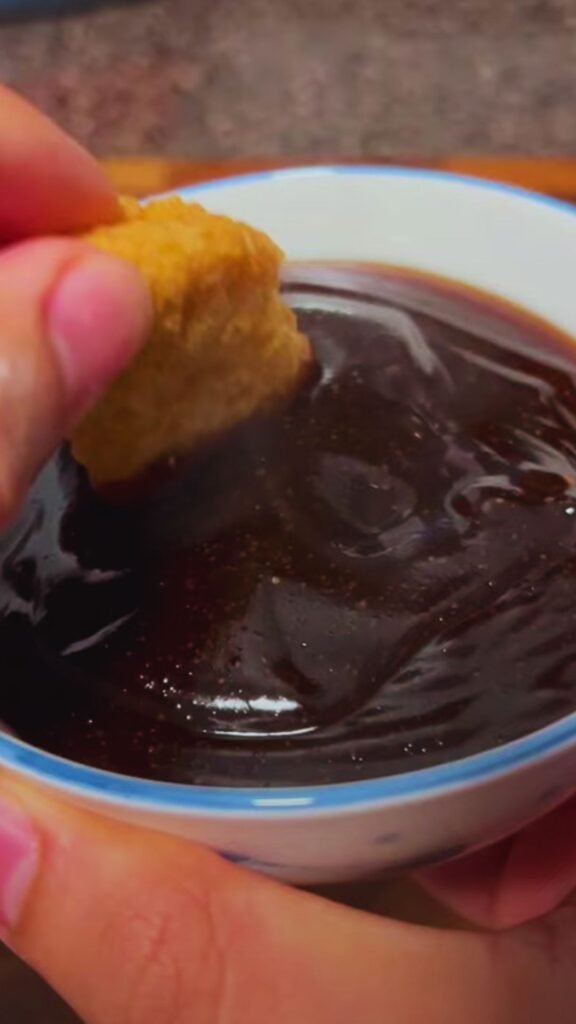
Now that you’ve mastered making the sauce, here’s how to incorporate it into various dishes:
Perfect Pairings
Szechuan sauce works wonderfully with:
| Protein | Vegetables | Starches |
|---|---|---|
| Chicken | Bell peppers | Rice |
| Beef | Broccoli | Noodles |
| Pork | Green beans | Potatoes |
| Tofu | Eggplant | Dumplings |
| Shrimp | Mushrooms | Bao buns |
| Duck | Bok choy | Rice cakes |
| Lamb | Cauliflower | Mantou |
| Tempeh | Snow peas | Quinoa |
Cooking Methods
The versatility of Szechuan sauce means it works with multiple cooking techniques:
- Stir-frying: Add 2-3 tablespoons toward the end of cooking
- Marinating: Use 1/4 cup to marinate proteins for 2-4 hours before cooking
- Dipping: Serve warm or at room temperature as a dipping sauce
- Glazing: Brush onto protein during the final minutes of roasting or grilling
- Drizzling: Thin with a little water and drizzle over finished dishes
- Noodle sauce: Mix with a splash of pasta water for a perfect noodle coating
Classic Szechuan Sauce Applications
- Szechuan Chicken: Stir-fry diced chicken with bell peppers, onions, and bamboo shoots, then finish with the sauce
- Mapo Tofu: Simmer soft tofu cubes with ground pork and Szechuan sauce
- Kung Pao Vegetables: Stir-fry mixed vegetables with peanuts and sauce
- Szechuan Noodles: Toss cooked noodles with sauce, sesame seeds, and green onions
- Spicy Dumplings: Drizzle the sauce over steamed dumplings
Serving Suggestions
When serving dishes with Szechuan sauce, consider these accompaniments to create a balanced meal:
- Cooling elements: Cucumber salad, pickled vegetables, or a side of plain yogurt
- Textural contrasts: Crispy wontons, toasted peanuts, or sesame seeds
- Flavor balancers: Steamed rice, mild vegetable dishes, or sweet elements
- Refreshing beverages: Chrysanthemum tea, lychee juice, or cucumber-mint water
- Dessert pairings: Fresh fruit, mango pudding, or sweet red bean soup
Storage and Shelf Life
To maintain the quality of your homemade Szechuan sauce:
- Store in an airtight glass container in the refrigerator
- Use clean utensils when scooping out portions
- The sauce will keep for up to two weeks refrigerated
- Flavor will intensify over the first 48 hours
- If the oil separates, simply stir before using
- For longer storage, freeze in ice cube trays then transfer to freezer bags (lasts up to 3 months)
Troubleshooting Your Sauce
Even experienced cooks encounter issues. Here’s how to fix common Szechuan sauce problems:
| Problem | Cause | Solution |
|---|---|---|
| Too spicy | Too many chilies or not enough deseeding | Add more sugar and soy sauce to balance heat |
| Not spicy enough | Old chilies or not enough used | Add fresh chili oil or cayenne pepper |
| Too salty | Too much doubanjiang or soy sauce | Add a splash of water and more sugar |
| Too thick | Reduction cooked too long | Thin with water or chicken broth |
| Too thin | Not enough reduction | Simmer longer or add a cornstarch slurry |
| Bitter taste | Burned garlic/ginger or scorched chilies | Start over with careful temperature control |
| Not numbing enough | Old peppercorns or not enough used | Add freshly ground Szechuan peppercorns |
| Too numbing | Too many peppercorns | Balance with more chilies and sugar |
Health Benefits of Szechuan Sauce Ingredients
Beyond its incredible flavor, many ingredients in Szechuan sauce offer health benefits:
- Szechuan peppercorns: Contain antioxidants and have antimicrobial properties
- Chilies: Rich in vitamin C and capsaicin, which may boost metabolism
- Garlic: Has antibacterial properties and may support heart health
- Ginger: Can aid digestion and reduce inflammation
- Fermented beans: Provide probiotics that support gut health
- Sesame oil: Contains heart-healthy unsaturated fats
Of course, moderation is key, as the sauce is also high in sodium from soy sauce and doubanjiang.
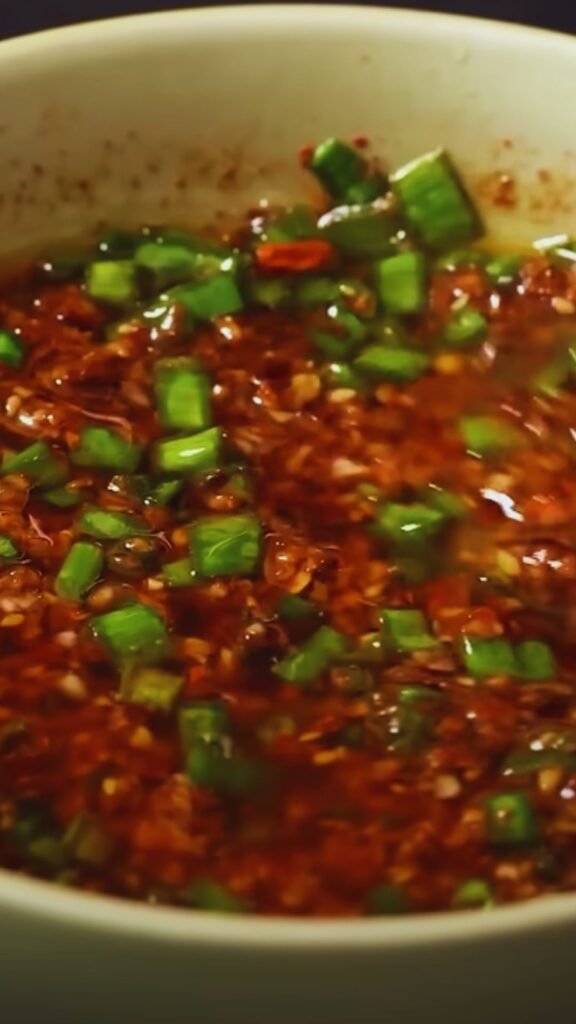
Frequently Asked Questions
Q: Can I make Szechuan sauce without Szechuan peppercorns? While Szechuan peppercorns are what give the sauce its distinctive character, you can substitute with 1 teaspoon of black pepper and 1/2 teaspoon of coriander seeds. The flavor won’t be authentic, but it will still be delicious.
Q: Is Szechuan sauce the same as hot chili oil? No, they’re different condiments. Szechuan sauce is thicker and contains multiple ingredients including doubanjiang. Chili oil is primarily oil infused with chili peppers and sometimes Szechuan peppercorns.
Q: How can I make my Szechuan sauce less spicy but still flavorful? Reduce the number of dried chilies by half and make sure to remove all seeds. You can also increase the sweet and savory elements (sugar, soy sauce) while maintaining the aromatics.
Q: Can I use fresh chilies instead of dried? Fresh chilies provide a different flavor profile. While you can use them, the sauce won’t taste traditional. If using fresh, try a mix of Thai bird chilies and red bell peppers.
Q: What’s a substitute for doubanjiang? Though not ideal, you can substitute with a mixture of red miso paste and chili garlic sauce (2:1 ratio). The flavor won’t be authentic but will provide similar umami and spice notes.
Q: Is Szechuan sauce gluten-free? Traditional Szechuan sauce contains soy sauce, which has wheat. For a gluten-free version, substitute tamari for soy sauce and ensure your doubanjiang is gluten-free (some brands contain wheat).
Q: Can I make Szechuan sauce ahead for a party? Absolutely! In fact, making it 1-2 days ahead allows the flavors to develop more fully. Reheat gently before serving.
Q: Why is my sauce bitter? Bitterness usually comes from burning the garlic, ginger, or chilies. Always cook these aromatics on medium-low heat and watch carefully.
My Journey with Szechuan Cuisine
I first encountered authentic Szechuan cuisine during a culinary trip to Chengdu, the capital of Sichuan Province. I was immediately captivated by the complex flavors and the way chefs balanced intense heat with other taste elements.
What struck me most was how different authentic Szechuan food was from the Americanized versions I’d tried before. The numbing sensation was completely new to me, and I found myself craving that unique málà experience long after returning home.
My first attempts at recreating Szechuan sauce were disastrous—either too fiery to enjoy or lacking the distinctive numbing quality. It took dozens of attempts, consultations with Chinese chefs, and hunting down authentic ingredients before I finally created a version I was proud of.
The recipe I’ve shared today represents years of learning and experimenting. While it respects traditional methods, I’ve adapted it slightly to work with ingredients you can find in most Asian markets or online specialty stores.
Final Thoughts
Making your own Szechuan sauce at home connects you to a culinary tradition that spans centuries. Each time I prepare this sauce, I’m reminded of the skilled chefs in Chengdu who have perfected this balance of flavors over generations.
Whether you’re using it as a dipping sauce for dumplings, a flavor base for stir-fries, or a marinade for your favorite protein, homemade Szechuan sauce elevates any dish it touches. The depth of flavor simply can’t be matched by store-bought versions.
I encourage you to approach this recipe with a spirit of adventure. Don’t be intimidated by ingredients you might not have used before—each component plays an essential role in creating that magical málà experience that makes Szechuan cuisine so beloved worldwide.
Start with the basic recipe, then adjust to your taste preferences. Over time, you’ll develop your signature version of this remarkable sauce. And when you serve it to friends and family, prepare for the inevitable requests for your secret recipe!

